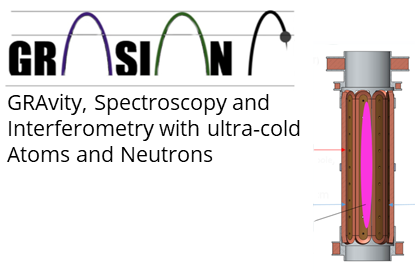
The Feynman–Stueckelberg interpretation states that antimatter and antiparticles are regular particles traveling backward in time. A complete periodic table of antimatter was envisaged by Charles Janet in 1929. Although Dirac did not himself use the term antimatter, its use follows on naturally enough from antielectrons, antiprotons, etc. Anderson in 1932 and named positrons from "positive electron". Dirac realised that his relativistic version of the Schrödinger wave equation for electrons predicted the possibility of antielectrons. The modern theory of antimatter began in 1928, with a paper by Paul Dirac. Schuster's ideas were not a serious theoretical proposal, merely speculation, and like the previous ideas, differed from the modern concept of antimatter in that it possessed negative gravity. He hypothesized antiatoms, as well as whole antimatter solar systems, and discussed the possibility of matter and antimatter annihilating each other. The term antimatter was first used by Arthur Schuster in two rather whimsical letters to Nature in 1898, in which he coined the term. Pearson's theory required a fourth dimension for the aether to flow from and into. The squirts represented normal matter and the sinks represented negative matter. Between the 1880s and the 1890s, Karl Pearson proposed the existence of "squirts" and sinks of the flow of aether. Using the once popular vortex theory of gravity, the possibility of matter with negative gravity was discussed by William Hicks in the 1880s. The idea of negative matter appears in past theories of matter that have now been abandoned. The French term contra-terrene led to the initialism "C.T." and the science fiction term "seetee", as used in such novels as Seetee Ship. When a particle and its corresponding antiparticle collide, they are both converted into energy. Similarly, electrons have a lepton number of +1, while that of positrons is –1. Protons and neutrons have a baryon number of +1, while antiprotons and antineutrons have a baryon number of –1. Neutrons do not carry a net charge, but their constituent quarks do. That is, an antiproton is negatively charged and an antielectron ( positron) is positively charged. 7.2 Antiprotons, antineutrons, and antinucleiĪntimatter particles carry the same charge as matter particles, but of opposite sign.The process by which this inequality between matter and antimatter particles developed is called baryogenesis. This asymmetry of matter and antimatter in the visible universe is one of the great unsolved problems in physics. There is strong evidence that the observable universe is composed almost entirely of ordinary matter, as opposed to an equal mixture of matter and antimatter. Physical principles indicate that complex antimatter atomic nuclei are possible, as well as anti-atoms corresponding to the known chemical elements. The nuclei of antihelium have been artificially produced, albeit with difficulty, and are the most complex anti-nuclei so far observed. For example, a positron (the antiparticle of the electron) and an antiproton (the antiparticle of the proton) can form an antihydrogen atom.


Īntimatter particles bind with each other to form antimatter, just as ordinary particles bind to form normal matter. The amount of energy released is usually proportional to the total mass of the collided matter and antimatter, in accordance with the notable mass–energy equivalence equation, E= mc 2. If surrounding matter is present, the energy content of this radiation will be absorbed and converted into other forms of energy, such as heat or light. The majority of the total energy of annihilation emerges in the form of ionizing radiation. Theoretically, a particle and its antiparticle (for example, a proton and an antiproton) have the same mass, but opposite electric charge, and other differences in quantum numbers.Ī collision between any particle and its anti-particle partner leads to their mutual annihilation, giving rise to various proportions of intense photons ( gamma rays), neutrinos, and sometimes less-massive particle–antiparticle pairs. Minuscule numbers of antiparticles can be generated at particle accelerators, however, total artificial production has been only a few nanograms No macroscopic amount of antimatter has ever been assembled due to the extreme cost and difficulty of production and handling. Antimatter occurs in natural processes like cosmic ray collisions and some types of radioactive decay, but only a tiny fraction of these have successfully been bound together in experiments to form antiatoms. In modern physics, antimatter is defined as matter composed of the antiparticles (or "partners") of the corresponding particles in "ordinary" matter.


 0 kommentar(er)
0 kommentar(er)
